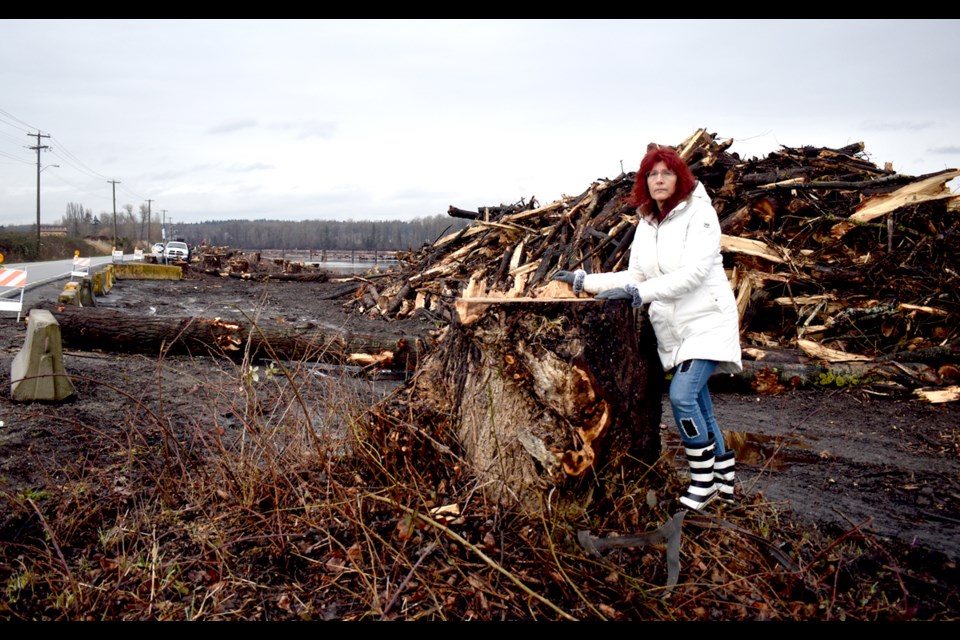The clear cutting of a long line of trees on River Road in east Richmond has upset local residents – Arline Trividic said it hurt to see the area where she would take her granddaughter to play by the river and where eagles would perch in the trees stripped almost bare.
About 300 trees in total along the east Richmond road are being cut down in preparation for dike maintenance work – some are already piled up, awaiting removal.
“To me, it was pristine and now it’s ugly,” Trividic said of the view she sees every day driving to work, pointing across the river to Burnaby where trees line the riverfront.
This upgrade is part of the larger dike master plan, with the ground being stabilized and the bank shored up to protect against erosion. According to the city, most of the trees being removed are already being undermined by erosion.
City spokesperson Clay Adams said it was a “disappointment” for the city to remove the trees but they had “no choice” if they wanted to make sure the dike was safe.
The thought used to be that trees would stabilize the dike, but engineers have since realized this isn’t true and, in fact, tree roots can actually cause the dike to become weaker.
“The roots can seriously destabilize the dike and reduce its structural integrity,” Adams explained.
The city will be planting about a thousand trees in compensation for these ones being removed, some in the same area but others in other parts of the city.
Trividic said when she met with city workers, the conversation got heated but the impact of the clear cut made her emotional.
She said she understands the dike work needs to be done, but she still questioned whether all the trees needed to be removed.
“We have to do this, but can we do this with the least amount of impact on the environment?” she said.
On top of the impact on the view and the trees, Trividic called the communication from the city a “big failure.”
Cardboard signs – about two feet by three feet - were posted on the side of the road just 48 hours before the work was scheduled to begin. These signs were barely visible as cars drove past them on River Road. Letters were sent to some residents in the area, but not to nearly all the homes.
Adams acknowledged the communication was lacking around the project and the best approach wasn’t used to let residents know about the upcoming work.
“We’re learning lessons around consultation and engagement,” Adams said
Steve Easterbrook, who owns a farm in the area, also felt there should have been more public consultation and input – perhaps some other plan could have been created, he said.
“Sometimes you need to think outside the box to determine what alternatives you have,” he said.



